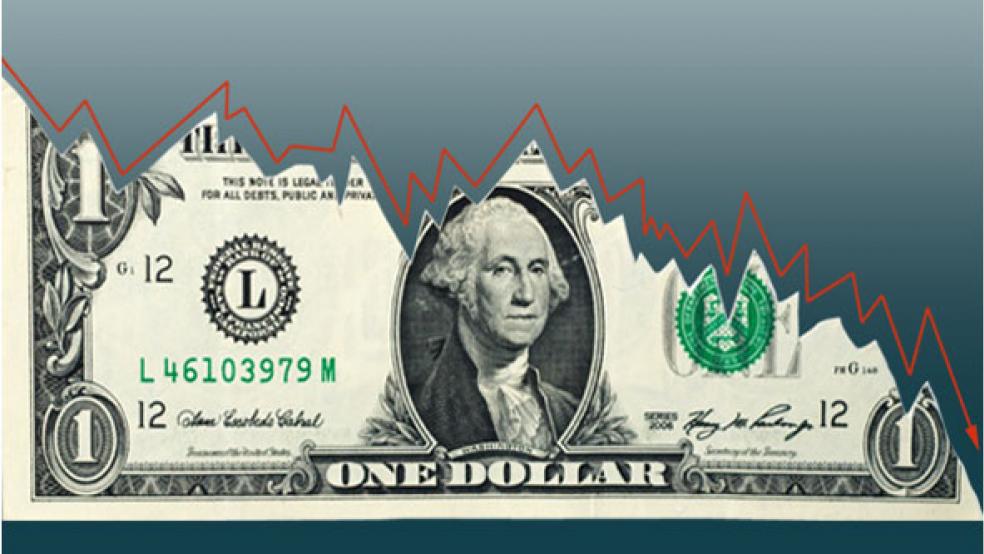Ratings agency Standard & Poor’s provided a stern warning to the U.S. on Monday, issuing a “negative outlook” on the economy because of uncertainty over the nation’s debt.
S&P, one of the nation’s three major credit rating agencies, said there is a one-in-three chance it will lower the U.S.’s long-term rating within two years. If the U.S. were to lose its ‘AAA’ rating , which it’s held since 1917, the government would have to offer higher-risk premiums on debt, in sharp contrast to the safe-haven status the Treasury bond has long enjoyed. “We believe there is a material risk that U.S. policy makers might not reach an agreement on how to address medium- and long-term budgetary challenges by 2013,” S&P said in a report.
But Treasury assistant secretary Mary Miller was more sanguine. “We believe S&P’s negative outlook underestimates the ability of America’s leaders to come together to address the difficult fiscal challenges facing the nation,” she said in a statement. It’s important for timely bipartisan cooperation on fiscal reform, she added.
Market Reactions
Shortly after the report was released, the Dow Jones Industrial Average sank 226 points , or 1.8 percent, to 12113 in mid-morning trade, while the S&P’s 500 index dropped 23 to 1296. It was the biggest one-day drop in nearly a month for both indices.
“It was inevitable at one point the rating agencies would signal strongly that action needs to be taken in the next few years,” said Douglas Elliott, fellow at the Brookings Institution. “The markets have gotten a little complacent. They may have been surprised that the warning was delivered with a negative outlook instead of just more speeches.”
The report said the U.S has a high-income, highly diversified and flexible economy, which is backed by a strong track record of monetary policy, as evidenced by the U.S.’s ability to contain inflation.
S&P noted that between 2003 and 2008, the U.S.'s total government deficit fluctuated between two percent and five percent of gross domestic product (GDP). Compared to other ‘AAA’ rated countries, the U.S. debt load increased to more than 11 percent of GDP in 2009. There are currently 20 ‘AAA’ sovereign rated countries. U.S. GDP is $14.6 trillion, according to the IMF’s latest estimates for 2010.
The report puts added pressure onlawmakers to act and comes just one week after President Obama laid out his $4 trillion deficit reduction plan over the next 12 years. A key component of the president’s strategy is to work with a bipartisan group of lawmakers over the next two months to negotiate an agreement. Already there is a group of six senators—three Democrats and three Republicans, known as the “Gang of Six” -- who say they’re near consensus a similar plan.
“We view President Obama's and Congressman Ryan's proposals as the starting point of a process aimed at broader engagement, which could result in substantial and lasting U.S. government fiscal consolidation,” the report said. “We see the path to agreement as challenging because the gap between the parties remains wide.”
The government is nearing the $14.3 trillion statutory debt ceiling (the accumulation of all of its deficits) and must act by July 8 to avoid triggering the first default on borrowing in U.S. history, according to Treasury Secretary Timothy F. Geithner.
In interviews aired during the Sunday talk shows, Geithner urged lawmakers to act, and said Republicans are prepared to raise the debt ceiling to avoid disruptions to capital markets and a potential credit default.
Related Links:
Wall Street Falls on U.S. Outlook, Global Economy (Reuters)
Stocks Fall as U.S. Credit Rating Outlook Lowered to ‘Negative’ by Standard & Poor’s (L.A. Times)
Standard & Poor’s Warns U.S. on Debt Rating (USA Today)




